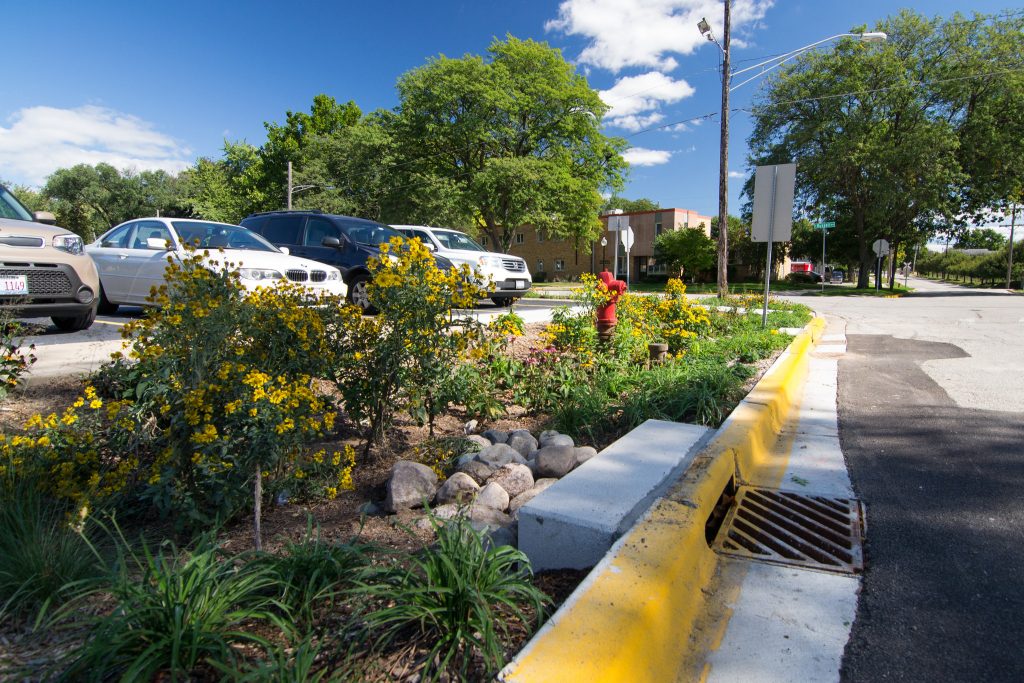
Rain gardens reduce stormwater runoff pollution while adding beauty.
Check out some of the media links below to learn about this topic:
- EPA Stormwater Management and Green Infrasturcture: Read about one of the fastest growing sources of pollution: stormwater.
- Healthy Yards– Information from Healthy Yards International for homeowners and professionals on how to avoid pesticides, plant wisely, and conserve water.
- Green Infrastructure Basics– Information from American Rivers.
- Fertilize Your Yard, Not Your River– Information from St. John’s Riverkeeper on preventing fertilizers from contaminating waterways.
- Rain Garden Basics– Information from the Alliance for the Chesapeake Bay for landowners on how to build a rain garden.
- EPA National Stormwater Calculator– Video introducing Environmental Protection Agency’s tool for estimating rainfall and runoff from a specific site.
- EPA National Stormwater Calculator Tool– Calculates the estimated stormwater runoff for an address and models changes in stormwater runoff when green infrastructure practices are implemented.
- EPA Green Infrastructure Modeling Toolkit– Full toolkit that includes the Stormwater Calculator listed above, as well as a Stormwater Management Model, a Green Infrastructure Wizard, and others.
- Green Streets: The Road to Clean Water– Short video from the EPA.
- Do Your Part, Be Septic Smart– Resource from the EPA on septic system education, including an infographic on septic system maintenance.
- How to Fertilize Your Lawn Responsibly– Learn tips and techniques developed by the University of Maryland under their lawn fertilizer law designed to protect waterways from nutrient pollution.
- Native Plants for Conservation, Restoration and Landscaping– Virginia Department of Conservation and Recreation resources about native plants.
- Riparian Buffers- The Very Best Protection– Learn about what riparian buffers are and how they help reduce nutrient pollution.
Take one of the actions below or come up with your own activity in celebration of World Oceans Day and share it with us at friends@fnfsr.org to enter in our World Oceans Day Challenge!
- Use the Alliance for the Chesapeake Bay’s tool to design a rain garden for your home.
- Create a responsible fertilization plan for your lawn or garden.
- Plot a section of your yard for a native plant garden.
- If you live along a river or stream, survey your existing riparian buffers and make a plan to improve them.
- Install a rain barrel, rain garden or other runoff reducing techniques in your yard.
- Plant a tree. See more about tree planting and maintenance here.
- Help reduce the amount of pollution in stormwater by calculating your carbon footprint and share ways you can reduce it.
- Create an infographic or poster on stormwater pollution or on a strategy to reduce stormwater pollution.
